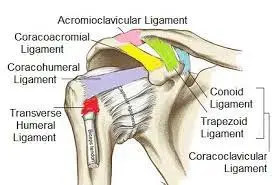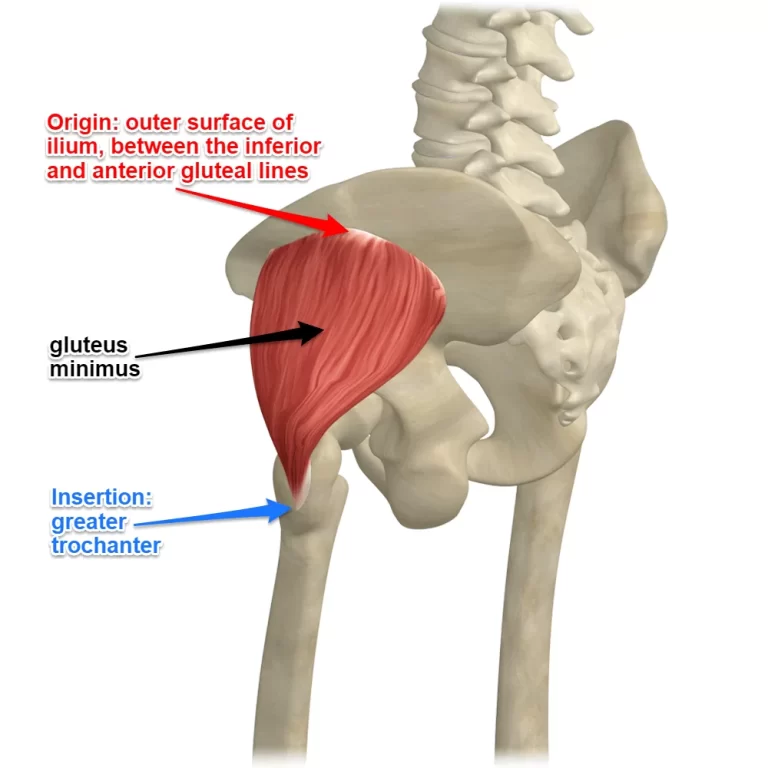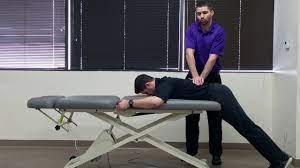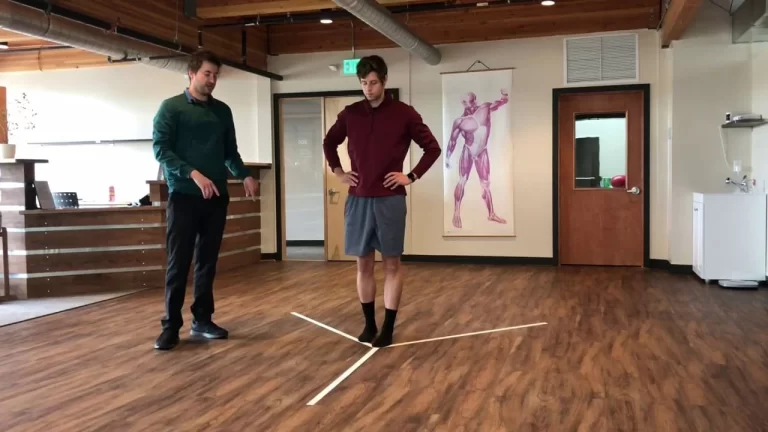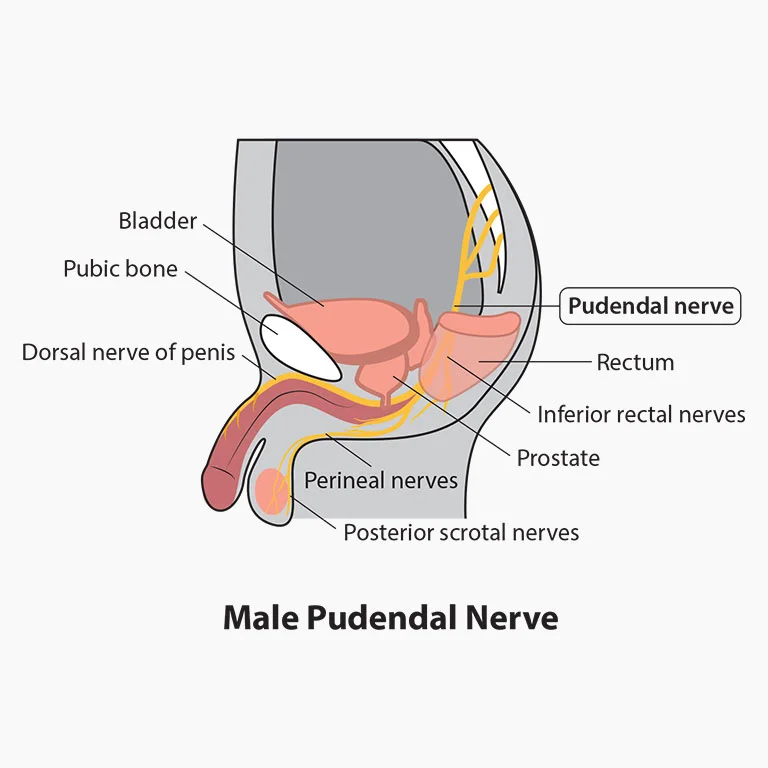Dermatomes
Introduction
A dermatome is an area of skin, and a single nerve root gives all of the sensations after they come to the brain. A dermatome is an area of skin that senses sensory neurons from a spinal nerve ganglion. A disorder affecting a related nerve root may be detected by symptoms that accompany a dermatome, like pain or a rash. Viral infections and somatic dysfunction are two examples.
In referred pain, sensory nerve fibers from dermatomes can join at the same spinal cord level as general visceral afferent fibers, like from the heart. As the central nervous system could tell whether the pain was coming from the viscera or the body wall when the general visceral sensory fiber was stimulated, it found the pain was coming from the body wall. So, related dermatomes of the same spinal segment referred to the pain.
A dermatome is an area of skin where most of the information from the afferent nerve comes from the dorsal root of that proper spinal nerve. There are 12 thoracic nerves, 5 lumbar nerves, 5 sacral nerves, and 8 cervical nerves. From a particular region of the skin, each nerve gives the sensation of pain to the brain.
The cervical spine causes skin problems. head, neck, shoulders, arms, and hands dermatomes connect to nerves in the neck area of your spine. These are the nerve dermatomes located in the cervical spine.
Function
Dermatomes can offer useful information when medical professionals are trying to identify or treat a particular type of illness. Think of your spinal cord as a freeway to get the idea. It processes the enormous volumes of nerve messages that move between your brain and body.
Your spinal nerves are like your spinal cord’s on/off ramps. Nerve impulses are sent and received by your spinal nerves. There may be an issue with the associated spinal nerve if you lose control over your muscles in a particular part of your body or if you are unable to feel pain, touch, or temperature. There is no traffic heading to or from that site because the on-ramps and off-ramps are effectively closed.
A problem with the bones, spinal cord, spinal nerves, or any of the nerve branches that are connected to them can be detected by dermatomes, which are crucial signals. Healthcare professionals can try to treat you by ruling out specific illnesses and reducing the options based on the affected dermatomes.
Nerve roots give rise to spinal nerves. From the dorsal horn of the spinal cord, dorsal nerve roots emerge to carry out sensory tasks. The ventral horn of the spinal cord is the origin of ventral nerve roots, which carry motor impulses to muscles.
Based on dermatomal patterns, the spinal nerves innervate a variety of structures after leaving the spinal canal through intervertebral foramina, also known as neuroforamina. On both sides, there are 31 different spinal segments, which match up with 31 different spinal nerves. The arrangement of the 31 spinal nerves is as follows:
- 8 pairs of cervical nerves
- 12 pairs of thoracic nerves
- 5 pairs of lumbar nerves
- 5 pairs of sacral nerves
- 1 pair of coccygeal nerves
The intervertebral foramina above each vertebrae is where the cervical nerves C1–C7 leave the body. Between the vertebrae C7 and T1, the cervical nerve C8 leaves the body. Under each of their vertebrae, the remaining spinal nerves all leave the body.
The primary layering of axial dermatomes is horizontal. Appendicular dermatomes, in contrast, are arranged longitudinally. The wide overlap of spinal nerve coverage areas causes some deviations in these generally conventional patterns.
History
Early attempts to connect anatomy and sensory biologically led to the emergence of dermatomes. Different definitions of dermatomes exist, and some maps are frequently employed. Dermatomes vary greatly between maps and even between people despite their usefulness. Additionally, there is evidence that suggests that existing dermatome maps are based on defective studies and are, therefore, erroneous.
There are usually two main dermatome maps recognized by the medical community. To start, the 1948 Keegan and Garret Map shows dermatomes that match the limb segments’ developmental patterns. Second, the distribution of pain from angina or myocardial infarction is shown on the 1933 Foerster Map, which shows the medial region of the upper limb as innervated by T1-T3. The dermatomes utilized in the American Spinal Cord Injury Association Impairment Scale correlate to the latter map, which is the one most frequently used in the medical field. Few attempts to confirm the initial dermatome maps have been made in subsequent years. The differences across dermatome maps were thoroughly reviewed by Lee et al.
Location of The Dermatomes
Nerves that attach to the spinal cord govern dermatomes, which are regions of the skin. That is, aside from the face, dermatomes cover the entire body. Your facial nerves are an exception, as they are not a part of your spinal cord.
There is also a lot of overlap between a dermatome and its neighbors due to the way your spine’s nerve connections are structured. Thus, feelings from a particular dermatome simultaneously pass through several spinal nerves.
An understanding of spine anatomy is necessary to comprehend the arrangement of the dermatomes. The interlocking bones that make up your spine, commonly called your backbone, are termed vertebrae (just one is a vertebra). Through openings in your vertebrae, your spinal nerves radiate from your spinal cord to the left and right.
There are five portions on the spine:
- The cervical spine is situated in the neck. Eight spinal nerves and seven vertebrae are found within it.
- The middle and upper back are parts of the thoracic spine. Twelve pairs of spinal nerves and twelve vertebrae are found in this area.
- The lower back is where the lumbar spine is located. There are five pairs of spinal nerves in it.
- The sacral spine is the section of the spine that joins the pelvis and backbone. Five pairs of spinal nerves and five vertebrae, which usually fuse by adulthood, are found in it. Your pelvic bones and sacral spine form a butterfly-like shape. The pelvic bones create the wings of the butterfly, while the sacral spine is its main body.
- The coccygeal spine, which is pronounced “cah-kij-ee-ul,” The coccyx, or tailbone these. One pair of spinal nerves and four vertebrae, which usually fuse by adulthood, are present.
A combination of letters and numbers is used by medical professionals to refer to the spinal nerves. The eighth spinal nerve, for instance, is shortened to C8. These letter-number combinations can also be used to determine which dermatomes are impacted.
Dermatomes related to the cervical spine
- C1: People don’t have a C1 spinal nerve; they have a C1 dermatome, which is located in the middle of the brain.
- C2 to C3: The back of your head, the upper neck, and a small area of your jaw under each ear. C3–C4 – The upper chest, lower neck, the back of your head, and a small little part of your jaw just below each ear are all placed at C3 – C4.
- C4 to C5: Upper arms and shoulders.
- C5 to C6: Your thumb itself, the thumb side of your forearm, and your upper arm.
- C6 to C7: Your index and middle fingers, thumb side of your forearm.
- C6–C8: Your pinky and ring fingers, the pinky side of your wrist, and your lower arm.
Dermatomes related to the thoracic spine
Most of the dermatomes on your thoracic spine can be found on the trunk of your body, which includes your back, belly, and chest. The only thoracic-connected dermatomes that are not on your trunk are T1 and T2, which are on your arms and trunk. The dermatomes from T3 to T12 form rings around the trunk of your body.
The locations of the dermatomes are:
- T1 to T2: The area just above your armpits in the chest and back, the little finger side of your upper arm and forearm.
T2 to T3: Your upper back and upper chest (just above the level of your shoulder blades and armpits), as well as the little finger side of your upper arm. - T3–T4: Your back and chest should be the same level as your armpit and the center of your shoulder blades.
T4 to T5: Lower shoulder blades and pectoral muscle edge.
T6 to T7: Level with the sternum’s bottom edge - T7 to T8: Level at the last of your rib cage’s lower part.
- T8–T9: The upper abdominal muscles, the upper belly.
T9 to T10- Just above and level with your navel and the upper-middle area of your back. - T10 to T11: Belly button, middle of your middle back.
- T11 to T12: The lower part of your middle back and the lowest area of your abdomen, just above the level of your hip bones (pelvis).
Dermatomes of the lumbar spine
- L1 to L2: The upper part of your hips and your sex organs (the penis and testicles in men, and the vagina in women, female assigned at birth). and that assigned male at birth).
L2 to L3: Middle of the small of your back and the muscles in your groin and upper thigh. - L3 to L4: This dermatome is the front and outer end of your thigh muscles (quadriceps), the middle-lower section of the small of your back, the outer of your leg just above your knee, and your kneecaps.
L4 to L5: The inner sides of your calf muscles, the front of your lower leg and kneecap, and the inside middle front surface of your feet, including your big toe, second toe, and third toe.
Dermatomes of the sacral and coccygeal spine
The dermatomes of the sacral spine are the areas near your buttocks and the back of your
legs. Your spine’s coccygeal part has only one spinal nerve and one made of a dermatome.
- S1 to S2: The part area of your buttocks (including the gluteal cleft, the top part where your buttocks divide), the middle and outer parts of your calf and thigh muscles, the outer area of your ankles, and your fourth and fifth toes.
S2 to S3: A vertical area in the of your buttocks to down in the upper-middle area of your calf muscles and the inner-middle area of your back thigh. - S3 and down: Every spinal nerve from S3 down, including your coccygeal spinal nerve, connects the genitals, anus, and the skin area in between (the perineum).
Purpose
The dermatome test is part of a neurological examination. They are used to assign the neurologic “level” or determine whether the sensory loss in a limb corresponds to a different spinal segment, implying that the lesion is of that nerve root.
Technique
The ideal tools for testing dermatomes are cotton wool and a pin. Asking the patient to close their eyes and provide the therapist with their thoughts on the different stimuli. Tests ought to be compared bilaterally and concentrate on certain dermatomes.
- Apply a piece of cotton wool to a skin region to perform the light touch test.
- Asking the patient if the pin feels blunt or sharp after gently touching their skin with it is known as the pinprick test.
Asking the patient to explain the distribution and pattern of sensory complaints (such as tingling, numbness, or reduced or absent sensation) during the system review gives the therapist a head start on the examination and helps them identify the damaged nerves and dermatome(s).
Pain dermatomes are smaller than light-touch dermatomes. Light touch tests are less sensitive than pain sensibility tests when only one or two parts are impacted.
Controversies
Your body is divided into segments that include dermatomes. Individual differences may exist in the precise dermatome pattern. Some overlap between nearby dermatomes could exist. Based on the techniques employed to determine skin segment innervation, published dermatome maps differ in a few ways.
The history of dermatome mapping, including the differences in approaches and the discrepancies in dermatome maps utilized in practice and education, is covered by Downs and Laporte in a clinical commentary.
Clinical significance
The ability to evaluate and diagnose a broad range of disorders makes dermatomes significant. Dermatome neurological screening helps find patterns of sensory loss that can point to a particular spinal nerve involvement. Symptoms along a particular dermatome, for instance, can point to injury or disturbance to a particular spinal nerve root.
- Nerve Entrapment
- Radiculopathy
- Spinal Cord Injury
- Herpes Zoster
Radicular Pain and Radiculopathy
A single posterior root or spinal ganglion injury or irritation results in radiating pain, which is also referred to as nerve root discomfort. Pain that spreads down the limb and is characterized by shooting, burning, or lancinating sensations is often caused by spinal stenosis or a herniated disc.
Although they are sometimes confused, radicular discomfort and radiculopathy are not the same thing. The objective loss of sensory and/or motor innervation caused by compromised impulse conduction along a spinal nerve or its roots is known as radiculopathy. It is painless and shows up as numbness and/or weakness that is restricted to the dermatome and/or myotome of the injured dorsal root.
Another name for lumbar radicular pain is sciatica. The sciatic nerve makes its way from the lower back down the back of the thigh and leg, where this pain starts. Usually, physical therapy, medication, and spinal surgeries are used to treat and control radicular discomfort. Surgery like discectomy (removal of an intervertebral disc) or laminectomy (removal of a vertebra’s lamina) can help reduce discomfort if these approaches prove futile.
Spinal cord injury & Trauma
When identifying the location of injury in spinal cord injuries, dermatomes are especially helpful. Physicians look at each dermatome separately.
Herpes Zoster
The varicella-zostervirus reactivates to cause Herpes Zoster, also known as shingles, an infection of the peripheral nerve system. Only people who have had chickenpox can get shingles because of this virus. Following recovery from chickenpox, the virus typically stays dormant in one spinal ganglion.
Since cell-mediated immunity deteriorates with age and usually affects those over 50, reactivation of the virus is probable. After leaving the spinal ganglion, the reactivated virus may impact the sensory neurons in the skin. Symptoms of the infected dorsal root’s dermatome include blisters, discomfort, redness, and discolouration. The lumbar and thoracic regions have the most impacted dermatomes.
Analgesics and antiviral drugs (acyclovir, famciclovir, or valacyclovir) are frequently used to alleviate shingles pain. Postherpetic neuralgia (PHN) is a condition that can cause pain that lasts for years, but it usually lasts for three to five weeks. Vaccination is the most effective strategy to prevent shingles or chickenpox.
Conditions and Disorders
Despite being skin regions, dermatome disorders are typically caused by more serious health problems. Because they impact particular spinal nerves or the spinal cord in that area, dermatology problems occur. Therefore, any illness that affects your spinal cord or spinal nerves may result in dermatome-related symptoms. Although the damage in these situations is highly localized, the consequences differ based on which dermatomes are impacted.
This kind of harm or impact may arise from the following circumstances:
- Injury: One or more dermatomes may be impacted by a spinal cord injury or spinal nerve root injury. Car crashes, penetrating trauma (such as knife or gunshot wounds), and fall-related spinal fractures are the most frequent causes of these injuries. Injuries received during birth or in the first few weeks of life may also be the cause of this (e.g., cerebral palsy).
- Cancer and spinal tumors: This category includes cancer that starts elsewhere in your body and spreads to your spine, as well as cancer that originates on or near your spinal cord.
- Fluid-filled cavities called cysts can develop around the spinal cord in a disorder called syringomyelia.
- Infections: These can cause swelling and inflammation by attacking your spinal cord and nerve roots directly. Your spinal nerves or the spinal cord itself may be overly stressed because there isn’t much room for swelling surrounding the cord.
- Ischemia, or lack of blood flow: Your spinal cord and nerves need blood flow just like any other bodily component. Blood flow can be stopped by a ruptured or clogged blood artery.
- The conditions you are born with are known as congenital conditions. The spine, spinal cord, and spinal nerves are all impacted by certain congenital conditions. Myelomeningocele and spina bifida are two instances of this.
Common signs or symptoms of dermatome-related conditions
Disorders of the skin are caused by disturbances in the nerves or spinal cord. Such disruptions can result in some symptoms. Three categories are used to group these symptoms:
- Motor (movement-related)
- Sensory (touch-related)
- Autonomic (bodily processes that occur automatically)
Motor symptoms:
- Paralysis or weakening of the muscles
- Uncontrolled muscular contractions, whether they are uncontrollably active or inert
- The wasting and shrinking of muscles caused by inactivity is known as muscular atrophy.
Sensory symptoms:
- Pain, tingling, and numbness are some of the symptoms.
Autonomic symptoms:
Body functions that happen subconsciously are known as autonomic processes. These processes are essential for your body’s self-maintenance and self-regulation. If you have damage to a dermatome that affects autonomic functioning, you can have symptoms that show your body can’t regulate processes in that area on its own. Some examples are as follows:
- Hyperhidrosis (excessive sweating) or anhidrosis (insufficient sweating).
- Bladder or bowel muscle dysfunction that impairs your ability to pop (fecal incontinence) or pee (urinary incontinence)
- Sexual dysfunction.
A few typical tests to look for dermatome issues
Numerous tests can detect or diagnose issues with your dermatomes and spinal nerves. The most popular are tests for nerve signal detection and imaging, which include:
- Computed tomography (CT) scans
- Magnetic resonance imaging (MRI) scans
- Cisternogram scan
- Electromyogram (EMG) tests
Treatment is available for dermatome-related conditions
Depending on the underlying reason and specific circumstances, there are many treatments for disorders that affect your spinal nerves and dermatomes. A healthcare provider is the ideal person to tell you about the available therapies and what they recommend because treatment options can differ so much.
Care
Taking care of your spine is the first step towards taking care of your dermatomes, which are markers of the health of your spinal cord and nerves. Keep in mind the following information regarding the condition of your spine and spinal nerves:
- Wear seat belts and other safety gear as advised: One of the most common causes of spinal injury is motor vehicle collisions. Restraints such as seat belts can help you avoid severe injury.
- Lift safely: You can prevent spinal cord and nerve injuries (such as a herniated disk) by lifting with your legs instead of your back. Wearing a back support brace may be necessary if you have a history of back issues, particularly if lifting heavy objects is a part of your profession or if you frequently lift weights for exercise.
- When handling firearms, exercise caution because one of the main causes of spinal cord injury is gunshot wounds. Regardless of the situation, you should ALWAYS practice utmost caution when handling firearms. Despite knowing they aren’t loaded, pretend they are. It’s also important to keep firearms unloaded, trigger-locked, and out of children’s reach. Additionally, keeping ammunition locked up and separated is a smart idea.
- Take preventative measures to avoid falls: Safety gear, especially safety harnesses, is crucial when working at heights. Additionally, you should take safety measures to prevent falls at home, especially in the restroom or on stairs. Installing handrails, utilizing nonslip shoes and flooring, and keeping steps clear of trip hazards are a few examples of how to achieve this.
- Prioritize bone health: Osteoporosis and osteopenia are two bone-loss disorders that can cause vertebral fractures. Serious injury to the spinal cord and nerves may result from these fractures.
- It matters how you stand: Your back may experience needless strain if you sit or stand with poor posture. Your nerves and spinal cord may become compressed as a result. This includes, for instance, pinched nerves.
Summary
Skin regions that are attached to a single spinal nerve are known as dermatomes. Together, these regions provide a surface map of the body.
Symptoms in the related dermatome may arise from spinal nerve dysfunction or injury. Traumatic injury, infection, or compression can all cause nerve damage or dysfunction.
To assess the degree and location of nerve injury, doctors may look at a dermatome’s symptom severity. After that, they try to identify and get to the underlying source.
FAQs
What is a dermatome used for?
Small skin slices are cut from a donor for skin grafts using a surgical tool known as a dermatome. Recovering your skin damage from third-degree burns or trauma is one of its main uses.
What are myotome and dermatome?
Single sensory nerve roots supply the dermatome areas. Myotomes control movement while dermatomes control sensation. myotomes main two diffrenet type.
What is the dermatome level?
The cervical, thoracic, lumbar, sacrum, and coccygeal levels make up the 30 dermatomes, which are skin areas innervated by a specific spinal nerve root.
How do dermatomes work?
Dermatomes are epidermal regions that are each attached to a single spinal neuron. Together, these zones provide a surface map of the body. Dysfunction or damage to a spinal nerve may trigger symptoms in the corresponding dermatome.
How do you check dermatomes?
A piece of cotton to a skin area to test a light touch sensation.
Pinprick Test Pain Sensation: Ask the patient if the pin feels blunt or sharp, then gently feel the skin.
REFERENCES
- Dermatomes. (n.d.). Physiopedia. https://www.physio-pedia.com/Dermatomes
- Professional, C. C. M. (n.d.). Dermatomes. Cleveland Clinic. https://my.clevelandclinic.org/health/body/24379-dermatomes
- Dellwo, A. (2024, January 19). What Dermatomes Are and Why They’re Important. Verywell Health. https://www.verywellhealth.com/dermatomes-5186825
- Dermatomes. (2023, October 30). Kenhub. https://www.kenhub.com/en/library/anatomy/dermatomes
- Johnson, J. (2023, April 25). What are they, and where are they? https://www.medicalnewstoday.com/articles/what-are-dermatomes
- Lakhnotra, Y. (2024, February 4). Dermatomes – mapping your skin’s sensory zones. Samarpan Physiotherapy Clinic. https://samarpanphysioclinic.com/dermatomes/



